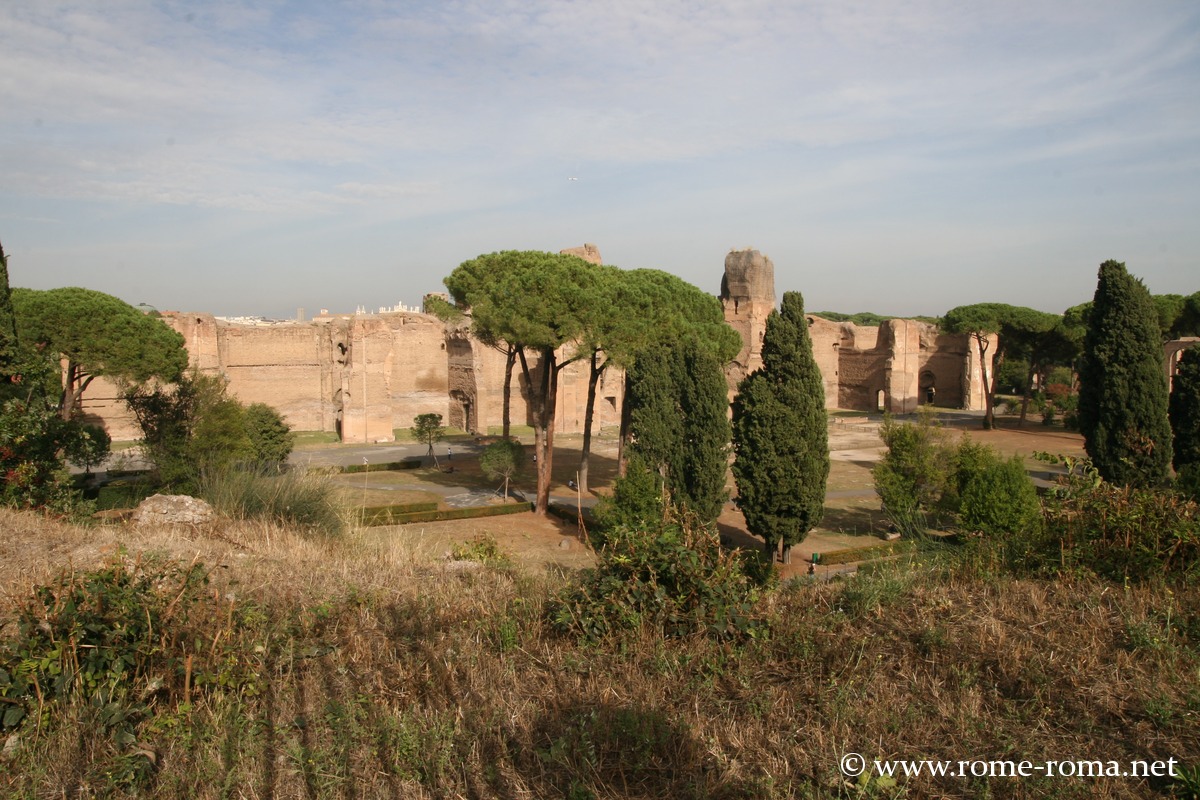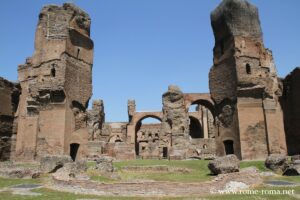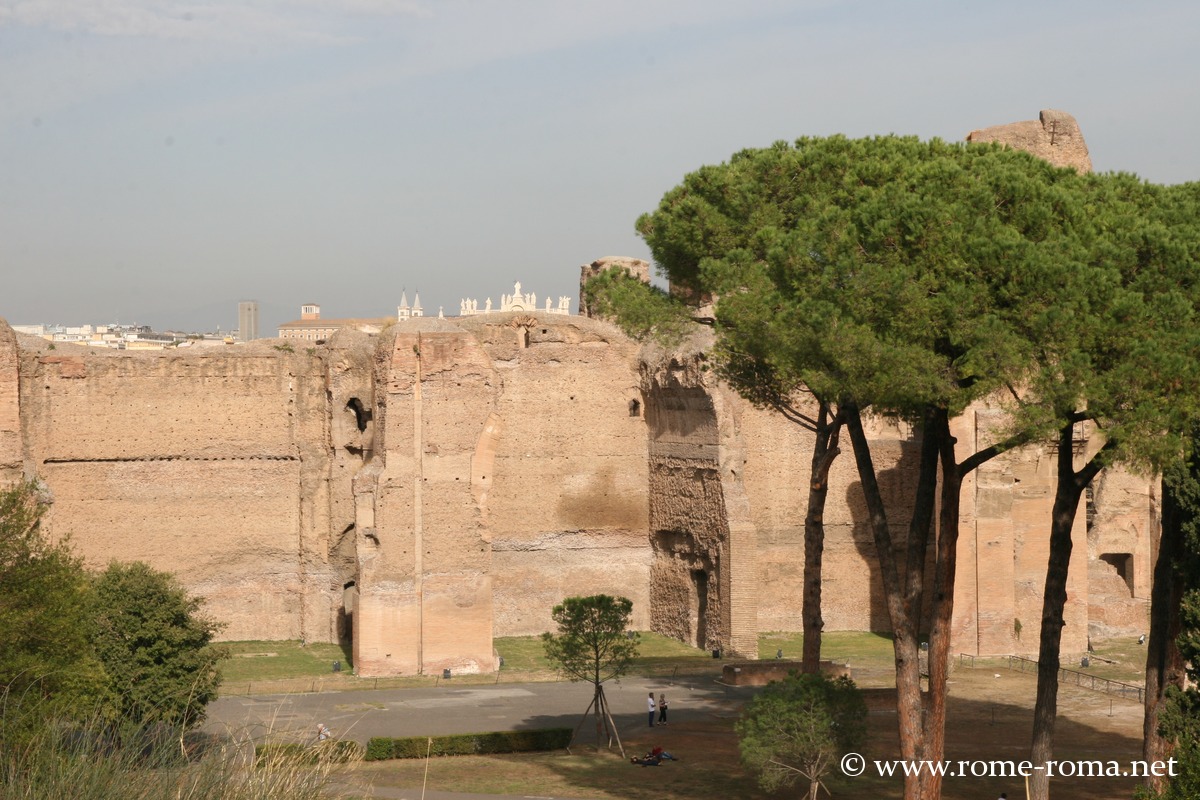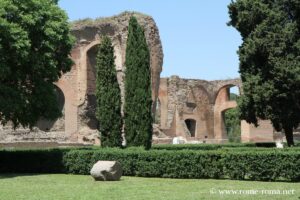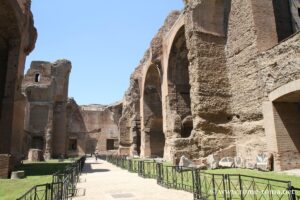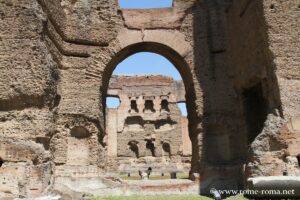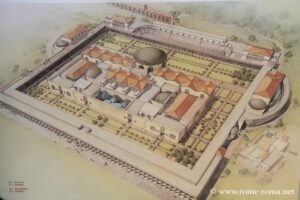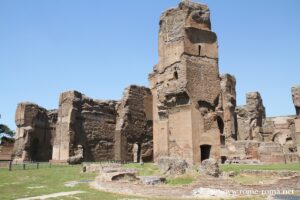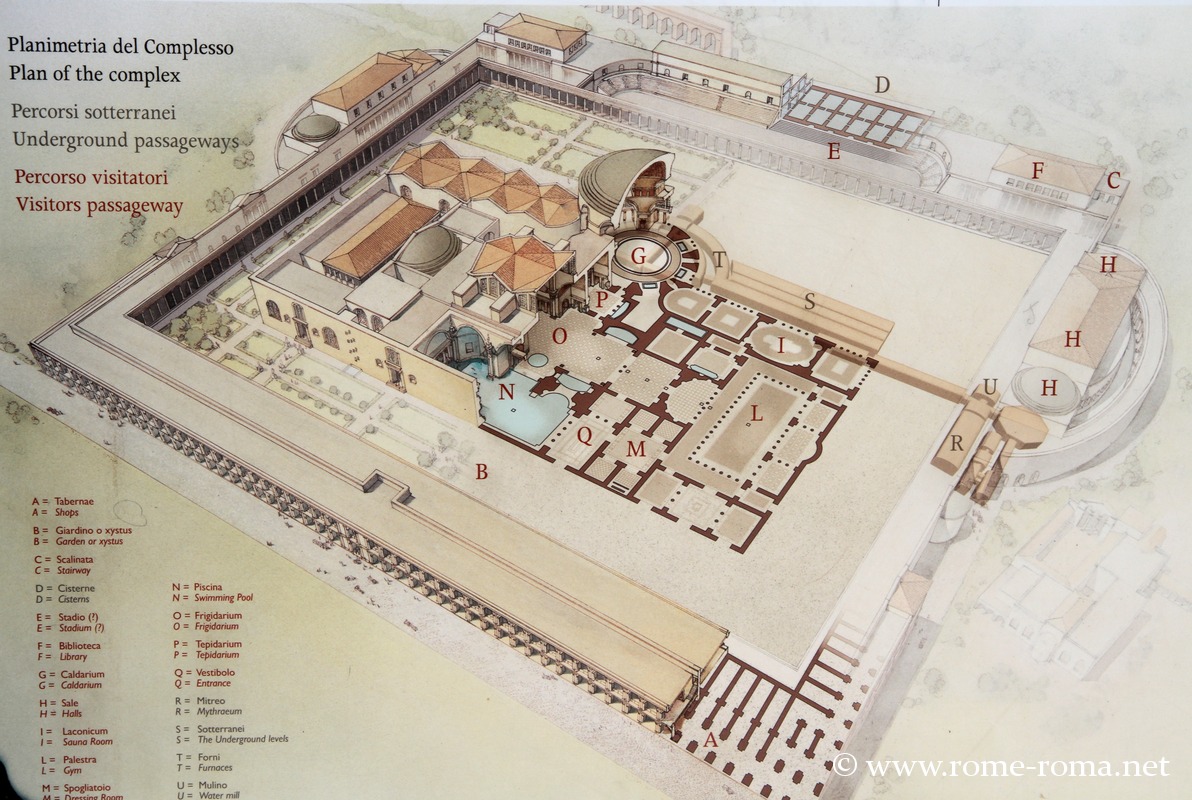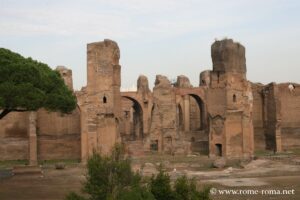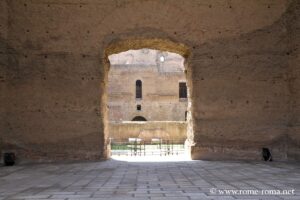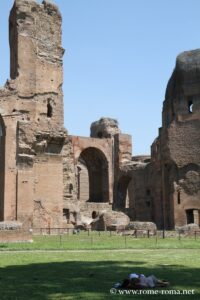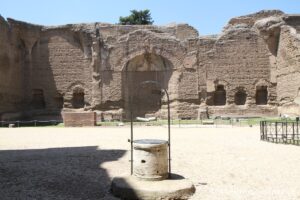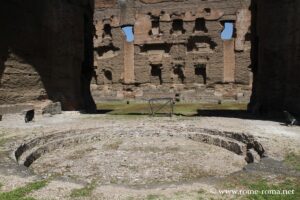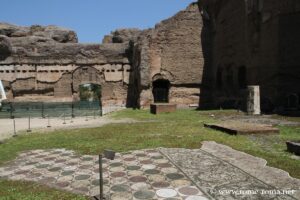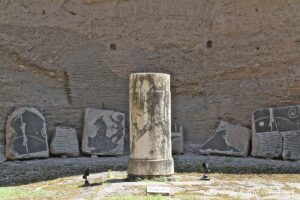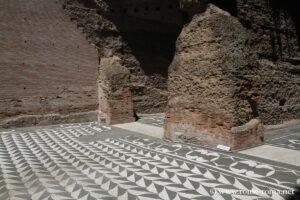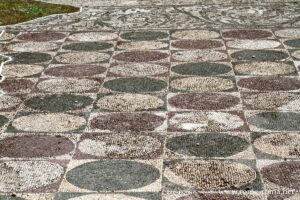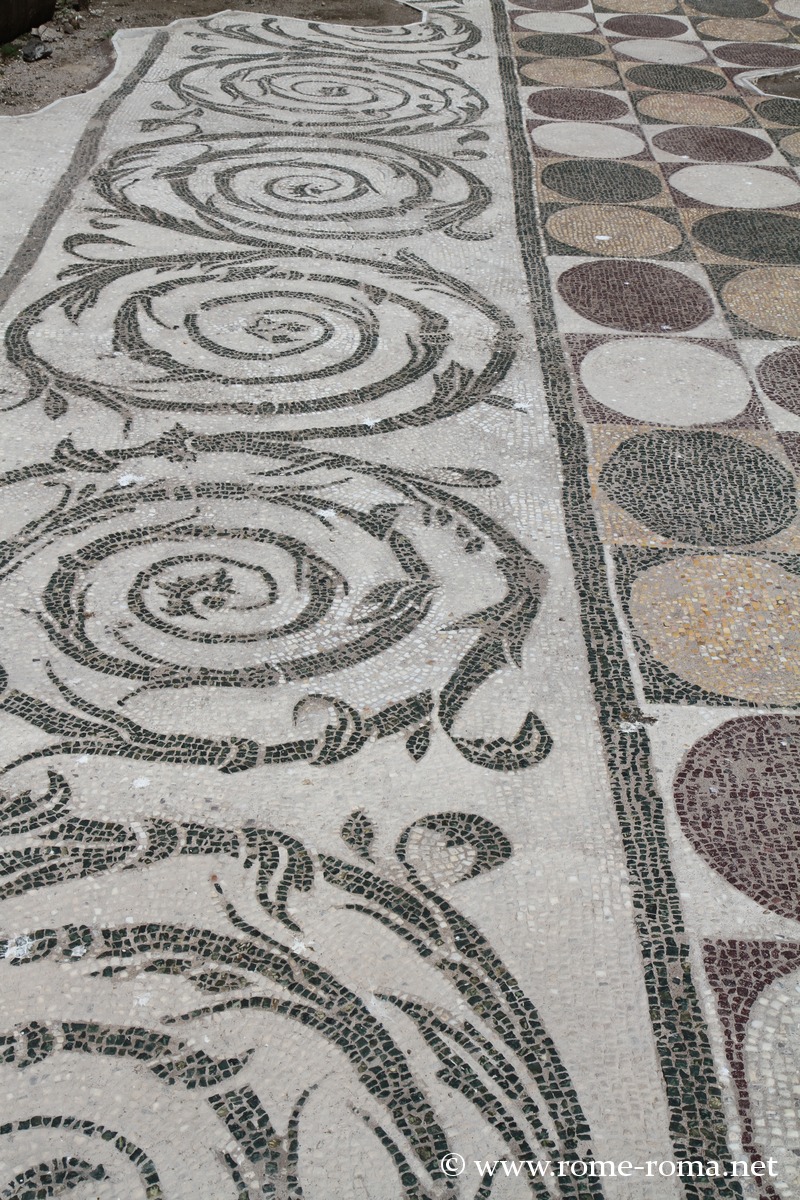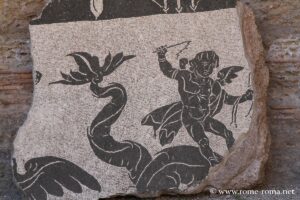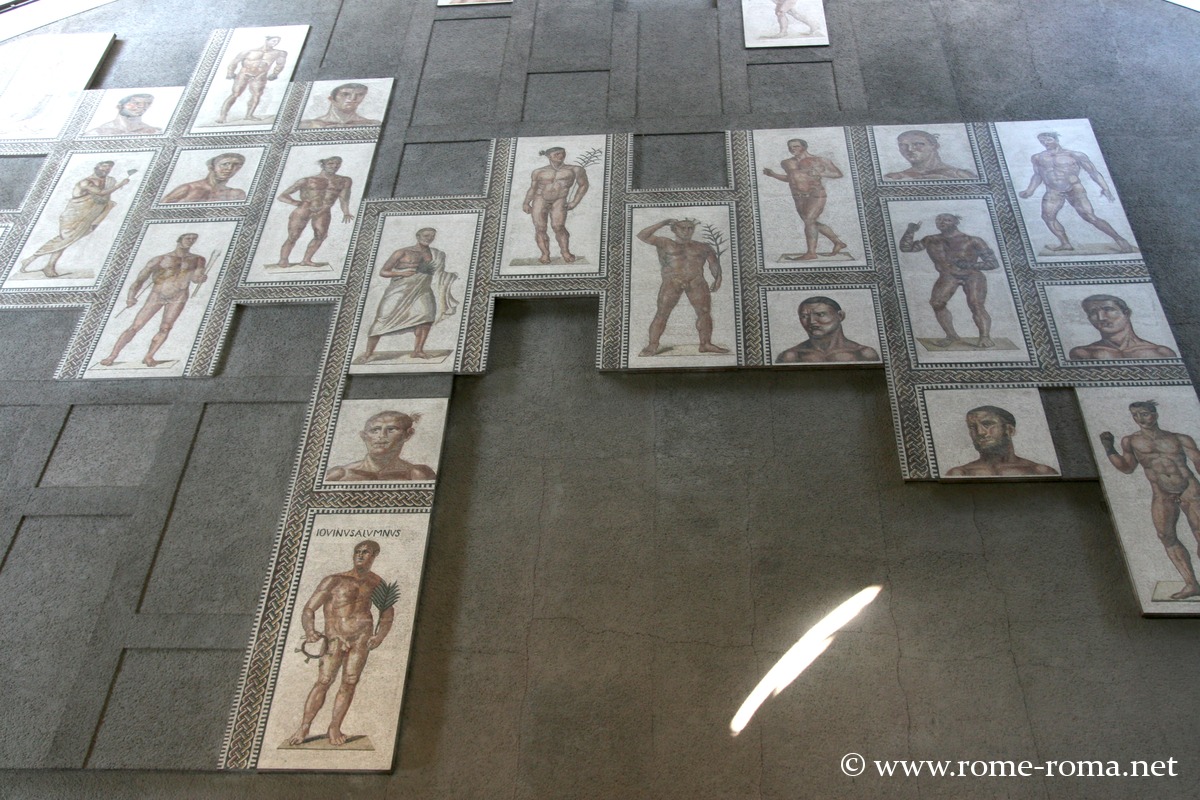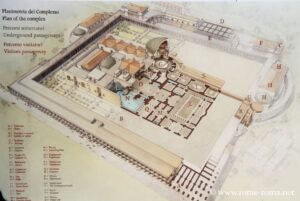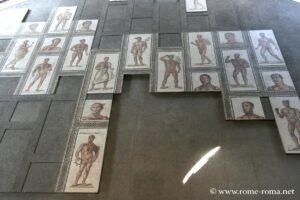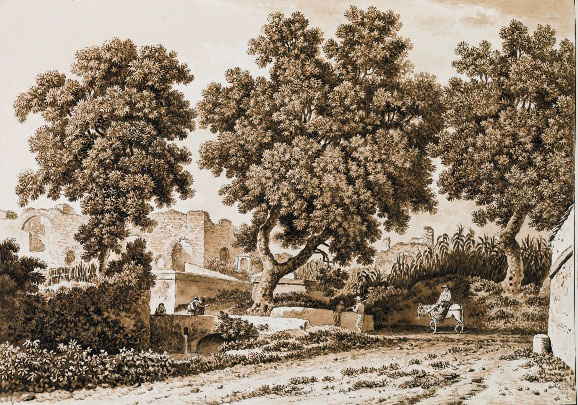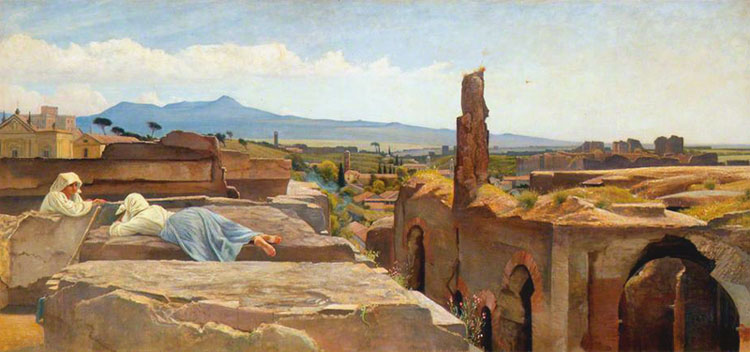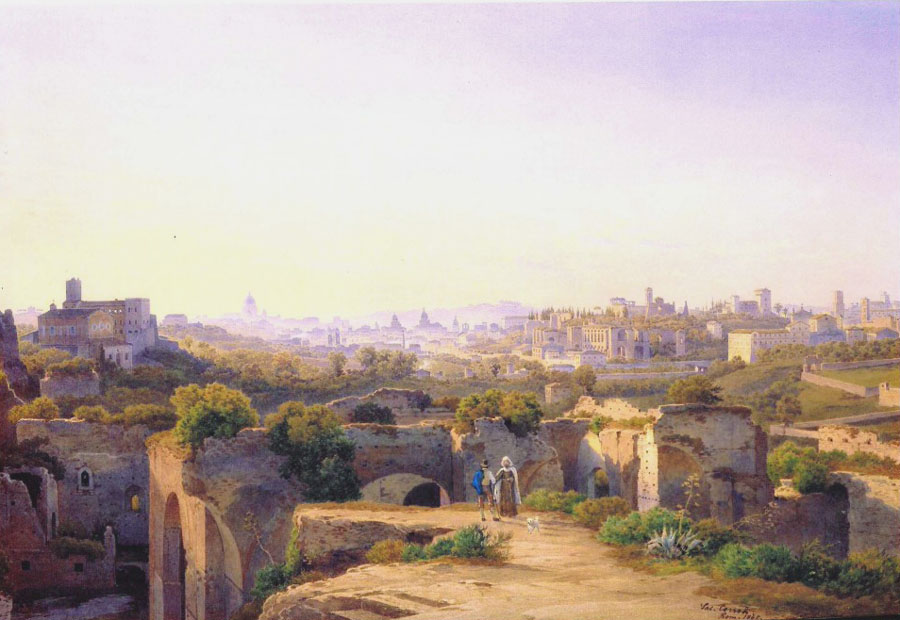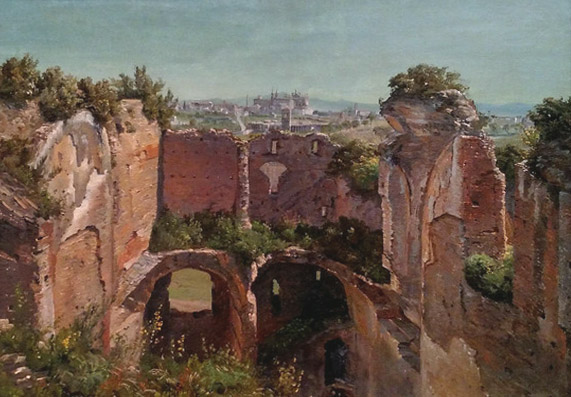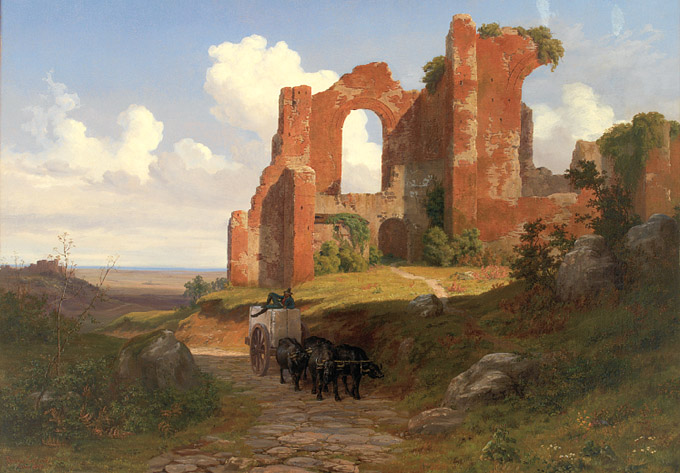The Baths of Caracalla are one of the most grandiose examples of Roman imperial baths, with a significant part of their structure still preserved.
Highlights on the site:
- The vast bathing halls (frigidarium, tepidarium, caldarium) illustrating the complex organization of the baths.
- The mosaics and decorated floors, bearing witness to the luxury and artistry of ancient Rome.
- The remains of gardens and pools, indicating the space dedicated to relaxation and leisure.
- The remnants of vaulted structures and arches, impressive for their size and construction technique.
- The wall paintings and sculpted fragments, offering a glimpse of the original interior decoration.
Historical overview
These baths were commissioned by Emperor Caracalla and built between 212 and 217. Polemius Silvius, in the 5th century, considered them one of the seven wonders of Rome. They were renowned for the richness of their decoration and the works of art that adorned them.
To supply these baths with water, the aqueduct of the Aqua Antoniniana was built in 212, crossing the Via Appia through the Arch of Drusus.
The outer walls were constructed by the last two emperors of the Severan dynasty, Elagabalus and Severus Alexander. Later restoration work was carried out. After the destruction of several aqueducts by the Goths in 537, the baths ceased to function.
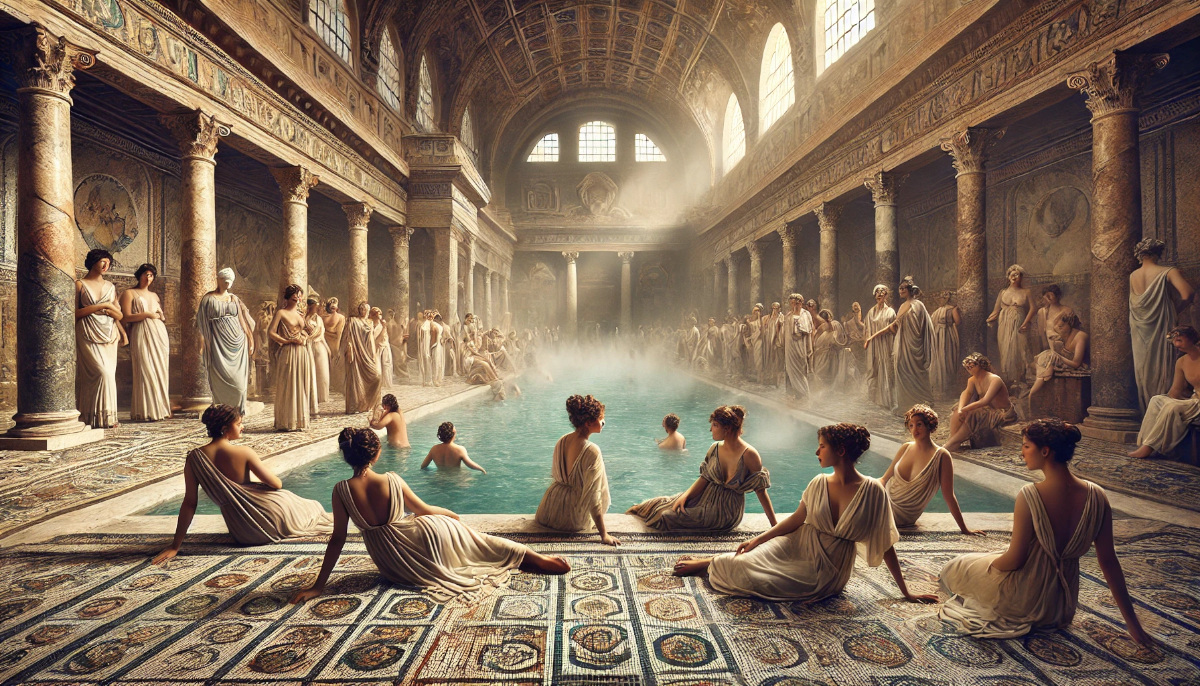
Description and Visit of the Baths
The Baths of Caracalla could accommodate more than 1,600 people. Including their outer walls, they measured 337 by 328 meters, while the central body was about 220 by 114 meters.
The outer enclosure included a portico, of which few remains survive.
At the rear, a dome-shaped structure with tiers covered huge cisterns with an estimated capacity of 8,000 m³ (about 8 million liters). On the sides were two rooms used as libraries.
An elevated path ran along the inside of the enclosure, probably intended for surveillance or visitor circulation, and perhaps also for the maintenance of the structures.
The space between the enclosure and the central body was occupied by gardens and other green areas.
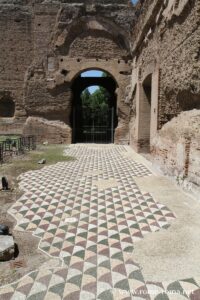 Access to the central body was through four doors, leading to a square hall, most likely the apodyterium (changing room), before reaching the bathing areas where various physical exercises were practiced, both outdoors and under cover. This was followed by a rectangular hall with small oblique openings to limit heat dispersion: this was the laconicum (steam bath). From there, one entered the caldarium, a large circular hall 34 meters in diameter, with a central hot-water pool. A hypocaust heating system warmed these rooms, representing a notable technical innovation at the time.
Access to the central body was through four doors, leading to a square hall, most likely the apodyterium (changing room), before reaching the bathing areas where various physical exercises were practiced, both outdoors and under cover. This was followed by a rectangular hall with small oblique openings to limit heat dispersion: this was the laconicum (steam bath). From there, one entered the caldarium, a large circular hall 34 meters in diameter, with a central hot-water pool. A hypocaust heating system warmed these rooms, representing a notable technical innovation at the time.
A similar circuit could be followed in the other half of the building, which is symmetrical.
The route continued into the smaller tepidarium, then into the frigidarium, the central basilica-plan hall, where bathing ended in the natatio, the outdoor swimming pool, perhaps surrounded by porticoes and columns as was often the custom for this space.
In 1901 and 1912, the underground areas were cleared, and in 1938, a Mithraeum—the largest known in Rome—was discovered.
During the second half of the 20th century, the central part of the baths was used for concerts and theatrical performances. In 2000, the complex was cleared of these modern installations.
Works Discovered in the Baths
At the center of the rectangular areas located at the ends of the frigidarium there were probably two granite basins, later moved to become the fountains of Piazza Farnese. Other basins were installed in the Belvedere Courtyard at the Vatican Museums.
Four granite columns adorned the natatio. Only one has survived and, since 1563, has stood in Piazza Santa Trinita in Florence. Most of the other columns were reused in palaces and churches in Rome.
Other works of art were discovered during excavations, especially in the 16th century, including the three gigantic Farnese sculptures: the Bull, Flora, and Hercules, now in the National Archaeological Museum of Naples; as well as the mosaic of the athletes, discovered in 1824, now on display in the Vatican Museums.
Map and address
Address : Viale delle Terme di Caracalla, 00153 Roma RM, ItalieIf you see this after your page is loaded completely, leafletJS files are missing.
Visit and Opening Hours
| Tickets to visit the Baths of Caracalla | |
| Hotels, rooms and apartments near the monument | |
| Baths of Caracalla Viale delle Terme di Caracalla, 52 | ||||
| ||||
| ||||
Learn more
|
Photo Gallery
